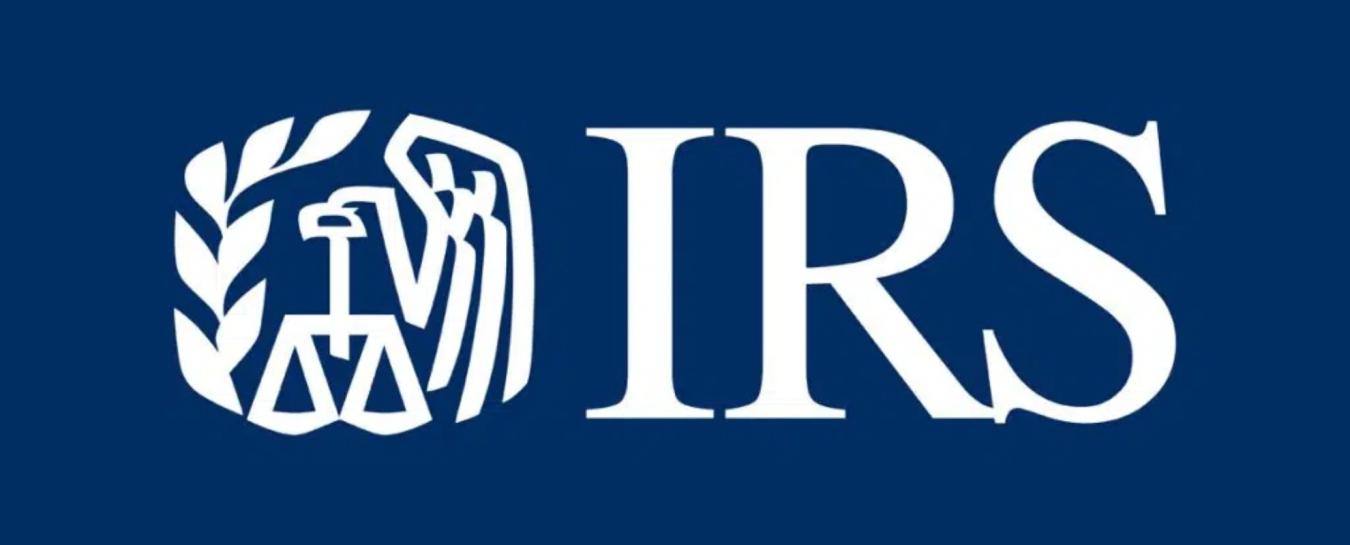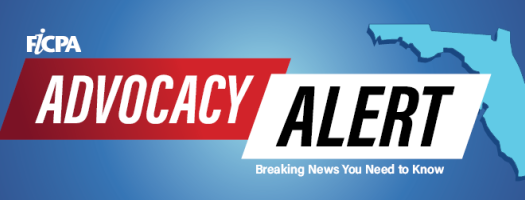
The Internal Revenue Service on Wednesday announced that it has added Brevard, Orange and Osceola to the list of Idalia-impacted counties being granted tax relief through Feb. 15.
These three counties were included in FEMA's Florida Disaster Declaration on Aug. 30 but were not included in the IRS' original list of counties being granted extensions, which appears below.
This IRS update comes in response to a letter sent by the FICPA last week, in which we alerted the IRS to the discrepancy and requested that it update its communications to include Brevard, Orange and Osceola, raising the total number of counties receiving relief to 49.
The FICPA will continue to advocate on behalf of its members throughout hurricane season, representing the interests of CPAs and their clients.
IRS release: Aug. 30
WASHINGTON — The Internal Revenue Service today announced tax relief for individuals and businesses affected by Idalia in parts of Florida. Taxpayers affected by the storm that began on Aug. 27. 2023, now have until Feb. 15, 2024, to file various individual and business tax returns and make tax payments.
Taxpayers affected by the storm that began on Aug. 27. 2023, now have until Feb. 15, 2024, to file various individual and business tax returns and make tax payments.
The IRS is offering relief to any area designated by the Federal Emergency Management Agency (FEMA). Currently, 46 of Florida's 67 counties qualify.
Following the disaster declaration issued by the FEMA, individuals and households affected by Idalia that reside or have a business in Alachua, Baker, Bay, Bradford, Calhoun, Charlotte, Citrus, Clay, Collier, Columbia, DeSoto, Dixie, Duval, Flagler, Franklin, Gadsden, Gilchrist, Gulf, Hamilton, Hardee, Hernando, Hillsborough, Jefferson, Lafayette, Lake, Lee, Leon, Levy, Liberty, Madison, Manatee, Marion, Nassau, Pasco, Pinellas, Polk, Putnam, Sarasota, Seminole, St. Johns, Sumter, Suwannee, Taylor, Union, Volusia and Wakulla counties in Florida qualify for tax relief.
As a result, affected individuals and businesses will have until Feb. 15, 2024, to file returns and pay any taxes that were originally due during this period. This includes 2022 individual income tax returns due on Oct. 16, 2023. The IRS noted, however, that because tax payments related to these 2022 returns were due on April 18, 2023, those payments are not eligible for this relief.
The Feb. 15, 2024, deadline also applies to quarterly estimated tax payments, normally due on Sept. 15, 2023 and Jan. 16, 2024. In addition, businesses with an original or extended due date including, among others, calendar-year partnerships and S corporations whose 2022 extensions run out on Sept. 15, 2023 and calendar-year corporations whose 2022 extensions run out on Oct. 16, 2023, also qualify for the Feb. 15, 2024 deadline. Penalties on payroll and excise tax deposits due on or after Aug. 27, 2023, and before Sept. 11, 2023, will be abated as long as the tax deposits are made by Sept. 11, 2023.
If an affected taxpayer receives a late filing or late payment penalty notice from the IRS that has an original or extended filing, payment or deposit due date that falls within the postponement period, the taxpayer should call the telephone number on the notice to have the IRS abate the penalty.
The IRS automatically identifies taxpayers located in the covered disaster area and applies filing and payment relief. But affected taxpayers who reside or have a business located outside the covered disaster area should call the IRS disaster hotline at 866-562-5227 to request this tax relief.
Individuals and households that reside or have a business in these counties qualify for tax relief, but any area added later to the disaster area will also qualify. The current list of eligible localities is always available on the disaster relief page on IRS.gov.
Filing and Payment Relief
The tax relief postpones various tax filing and payment deadlines that occurred from Aug. 27, 2023, through Feb. 15, 2024, (postponement period). As a result, affected individuals and businesses will have until Feb. 15, 2024, to file returns and pay any taxes that were originally due during this period.
This means, for example, that the Feb. 15, 2024, deadline will now apply to:
- Individuals who had a valid extension to file their 2022 return due to run out on Oct. 16, 2023. The IRS noted, however, that because tax payments related to these 2022 returns were due on April 18, 2023, those payments are not eligible for this relief.
- Quarterly estimated income tax payments normally due on Sept. 15, 2023, and Jan. 16, 2024.
- Quarterly payroll and excise tax returns normally due on Oct. 31, 2023, and Jan. 31, 2024.
- Calendar-year partnerships and S corporations whose 2022 extensions run out on Sept. 15, 2023.
- Calendar-year corporations whose 2022 extensions run out on Oct. 16, 2023.
- Calendar-year tax-exempt organizations whose extensions run out on Nov. 15, 2023.
In addition, penalties for the failure to make payroll and excise tax deposits due on or after Aug. 27, 2023, and before Sept. 11, 2023, will be abated as long as the deposits are made by Sept. 11, 2023.
The Disaster Assistance and Emergency Relief for Individuals and Businesses page has details on other returns, payments and tax-related actions qualifying for relief during the postponement period.
The IRS automatically provides filing and penalty relief to any taxpayer with an IRS address of record located in the disaster area. These taxpayers do not need to contact the agency to get this relief.
It is possible an affected taxpayer may not have an IRS address of record located in the disaster area, for example, because they moved to the disaster area after filing their return. In these kinds of unique circumstances, the affected taxpayer could receive a late filing or late payment penalty notice from the IRS for the postponement period. The taxpayer should call the number on the notice to have the penalty abated.
In addition, the IRS will work with any taxpayer who lives outside the disaster area but whose records necessary to meet a deadline occurring during the postponement period are located in the affected area. Taxpayers qualifying for relief who live outside the disaster area need to contact the IRS at 866-562-5227. This also includes workers assisting the relief activities who are affiliated with a recognized government or philanthropic organization.
Covered Disaster Area
The localities listed above constitute a covered disaster area for purposes of Treas. Reg. §301.7508A-1(d)(2) and are entitled to the relief detailed below.
Affected Taxpayers
Taxpayers considered to be affected taxpayers eligible for the postponement of time to file returns, pay taxes and perform other time-sensitive acts are those taxpayers listed in Treas. Reg. § 301.7508A-1(d)(1), and include individuals who live, and businesses (including tax-exempt organizations) whose principal place of business is located, in the covered disaster area. Taxpayers not in the covered disaster area, but whose records necessary to meet a deadline listed in Treas. Reg. § 301.7508A-1(c) are in the covered disaster area, are also entitled to relief. In addition, all relief workers affiliated with a recognized government or philanthropic organization assisting in the relief activities in the covered disaster area and any individual visiting the covered disaster area who was killed or injured as a result of the disaster are entitled to relief.
Under section 7508A, the IRS gives affected taxpayers until Feb. 15, 2024, to file most tax returns (including individual, corporate, and estate and trust income tax returns; partnership returns, S corporation returns, and trust returns; estate, gift, and generation-skipping transfer tax returns; annual information returns of tax-exempt organizations; and employment and certain excise tax returns), that have either an original or extended due date occurring on or after Aug. 27, 2023, and before Feb. 15, 2024, are granted additional time to file through Feb. 15, 2024
Affected taxpayers that have an estimated income tax payment originally due on or after Aug. 27, 2023, and before Feb. 15, 2024, are postponed through Feb. 15, 2024, will not be subject to penalties for failure to pay estimated tax installments as long as such payments are paid on or before Feb. 15, 2024.
The IRS also gives affected taxpayers until Feb. 15, 2024, to perform other time-sensitive actions described in Treas. Reg. § 301.7508A-1(c)(1) and Rev. Proc. 2018-58, 2018-50 IRB 990 (December 10, 2018), that are due to be performed on or after Aug. 27, 2023, and before Feb. 15, 2024, are granted additional time to file through Feb. 15, 2024.
This relief also includes the filing of Form 5500 series returns that were required to be filed on or after Aug. 27, 2023, and before Feb. 15, 2024, are postponed through Feb. 15, 2024, in the manner described in section 8 of Rev. Proc. 2018-58. The relief described in section 17 of Rev. Proc. 2018-58, pertaining to like-kind exchanges of property, also applies to certain taxpayers who are not otherwise affected taxpayers and may include acts required to be performed before or after the period above.
Unless an act is specifically listed in Rev. Proc. 2018-58, the postponement of time to file and pay does not apply to information returns in the W-2, 1094, 1095, 1097, 1098 or 1099 series; to Forms 1042-S, 3921, 3922 or 8027; or to employment and excise tax deposits. However, penalties on deposits due on or after Aug. 27, 2023, and before Feb. 15, 2024, will be abated as long as the tax deposits were made by Feb. 15, 2024.
Casualty Losses
Affected taxpayers in a federally declared disaster area have the option of claiming disaster-related casualty losses on their federal income tax return for either the year in which the event occurred, or the prior year. Taxpayers choosing to claim their losses on their 2022 return have extra time, until Oct. 15, 2024, to make this election. See Publication 547 for details. Individuals may deduct personal property losses that are not covered by insurance or other reimbursements. For details, see Form 4684, Casualties and Thefts and its instructions. Affected taxpayers claiming the disaster loss on their return should put FEMA disaster declaration number, DR-3596-EM on any return. See Publication 547 for details.
Other Relief
The IRS will waive the usual fees and requests for copies of previously filed tax returns for affected taxpayers. Taxpayers should put the assigned Disaster Designation, Idalia (EM-3596-FL), in bold letters at the top of Form 4506, Request for Copy of Tax ReturnPDF, or Form 4506-T, Request for Transcript of Tax Return,PDF as appropriate, and submit it to the IRS.
Qualified disaster relief payments are generally excluded from gross income. This means that affected taxpayers can exclude from their gross income amounts received from a government agency for reasonable and necessary personal, family, living or funeral expenses, as well as for the repair or rehabilitation of their home, or for the repair or replacement of its contents. See Publication 525 for details.
Additional relief may be available to affected taxpayers who participate in a retirement plan or individual retirement arrangement (IRA). For example, a taxpayer may be eligible to take a special disaster distribution that would not be subject to the additional 10% early distribution tax and allows the taxpayer to spread the income over three years. Taxpayers may also be eligible to make a hardship withdrawal. Each plan or IRA has specific rules and guidance for their participants to follow.
The IRS may provide additional disaster relief in the future.
Affected taxpayers who are contacted by the IRS on a collection or examination matter should explain how the disaster impacts them so that the IRS can provide appropriate consideration to their case. Taxpayers may download forms and publications from the official IRS website, IRS.gov.


